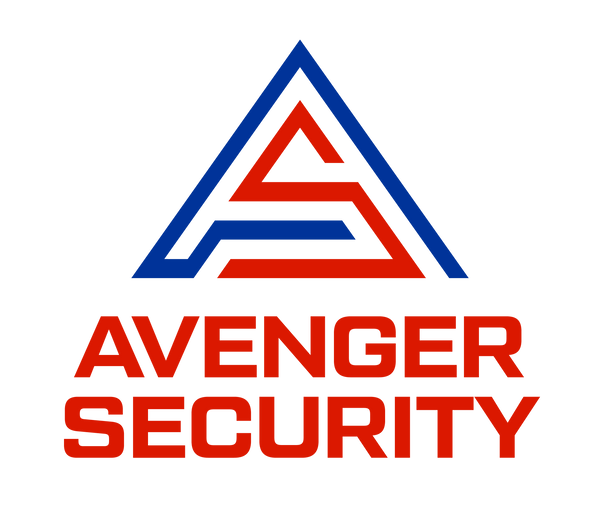
Electric Locks for Access Control Systems — Commercial Door Security Solutions
Electric Locks for Access Control Systems — Commercial Door Security Solutions
Types of Electric Locks for Access Control Systems
Avenger Security provides professional access control system design and installation in Austin, Texas, featuring the latest electric lock hardware for doors of all types. Electric locks have transformed how organizations secure their properties — offering flexibility, reliability, and intelligent integration that traditional mechanical locks cannot match.
When paired with an advanced access control system, electric locks deliver complete control over entry permissions, event logging, and door status. This guide explores the main types of electric locks, their features, applications, and advantages for commercial and industrial facilities.
Understanding Access Control Systems
Access control systems are designed to manage who can enter specific areas within a building. By combining authentication credentials (like keycards, PIN codes, or biometrics) with electronic locks, businesses can regulate traffic, improve safety, and maintain accountability.
Key Features of Modern Access Control Systems:
- User Authentication: Verifies identity using credentials such as keycards, PINs, biometrics, or mobile credentials.
- Cloud Management: Manage and monitor all doors remotely through a secure web or mobile dashboard.
- Audit Trail: Automatically records entry and exit events for full traceability and compliance.
- Integration: Seamlessly connects with video surveillance, fire alarms, and intrusion detection for unified security.
- Scalability: Expand to new doors, users, or sites without replacing core hardware.
Exploring Types of Electric Locks
Electric locks are the foundation of every professional access control system. They replace mechanical locks with electronically controlled mechanisms that can be released by access credentials or remote commands. Below are the most common types of electric locks used in commercial applications:
1. Electric Strike Locks
Electric strikes are installed in the door frame and work with mechanical latch hardware. When the system releases electronically, the strike plate pivots, allowing the latch bolt to pass through and open the door. Electric strikes are durable, cost-effective, and ideal for aluminum storefronts, wood doors, or steel frames.
Best for: Commercial offices, aluminum doors, and entryways with existing latch hardware.
2. Electromagnetic Locks (Maglocks)
Maglocks use a powerful electromagnet mounted on the door frame and a metal armature plate on the door. When energized, they create a magnetic bond that secures the door. These are strong and simple to install but are typically fail-safe — meaning they unlock during power loss — so compliance with fire codes and egress rules is critical.
Best for: Interior access points, automatic doors, and high-traffic areas where fast release is needed.
3. Electric Bolt Locks
Electric bolt locks use a motor or solenoid to extend or retract a locking bolt, securing or releasing the door. They are discreet and suitable for sliding or swing doors that require clean, minimal hardware.
Best for: Server rooms, cabinets, or glass doors where aesthetic design matters.
4. Electric Mortise Locks
Electric mortise locks are integrated into the door body itself, providing a higher level of security and sophistication. These combine the mechanical strength of a mortise lock with the flexibility of electronic control, ideal for commercial and institutional settings.
Best for: High-security office suites, schools, and healthcare facilities.
Advantages of Electric Locks in Access Control
- Enhanced Security: Electronic control prevents unauthorized duplication of keys and allows dynamic credential management.
- Remote Management: Lock or unlock doors remotely via cloud interface or mobile app.
- Custom Permissions: Grant access by schedule, user group, or door zone.
- Accountability: Track entry and exit logs for audits or investigations.
- Scalability: Easily expand to new doors or buildings without replacing existing infrastructure.
Applications of Access Control and Electric Locks
Commercial Buildings: Office complexes, retail spaces, and warehouses use electric locks for secure entry management.
Educational Institutions: Schools and universities implement electric locks to restrict access and protect students.
Healthcare Facilities: Hospitals rely on access control and electric locks to secure medical supply areas and protect patient privacy.
Government Facilities: Access control systems with fail-secure electric strikes meet strict federal and state compliance standards.
Residential & Multi-Tenant Properties: Apartment complexes and gated communities use smart locks and card readers for resident convenience and security.
Choosing the Right Electric Lock
Selecting the proper electric lock for your access control system depends on door type, hardware function, and code requirements. For instance, fail-secure electric strikes remain locked during power loss (preferred for perimeter doors), while fail-safe maglocks unlock for emergency egress compliance.
Avenger Security offers professional consultation, installation, and code-compliant configurations for commercial access control systems in Austin, Texas. Our technicians ensure all hardware meets local AHJ (Authority Having Jurisdiction) requirements, including fire alarm tie-ins and egress testing.
Conclusion
Electric locks are the cornerstone of modern access control systems. By combining advanced lock hardware with intelligent access management, businesses can protect property, manage credentials, and meet compliance with ease. From electric strikes and mortise locks to maglocks and bolt locks, Avenger Security helps you choose the right configuration for reliable and secure building access.
Contact Avenger Security today to schedule a free consultation for access control system installation and electric lock configuration in Austin, Texas.



